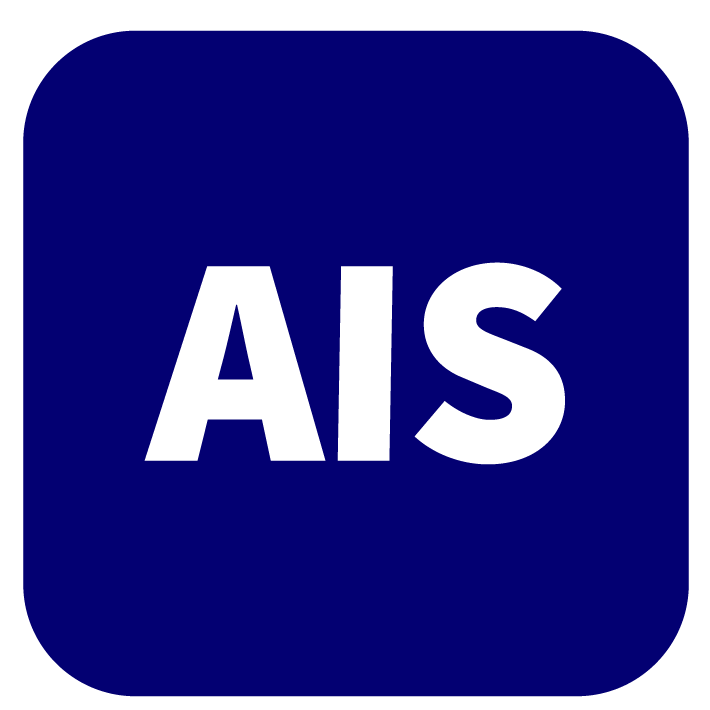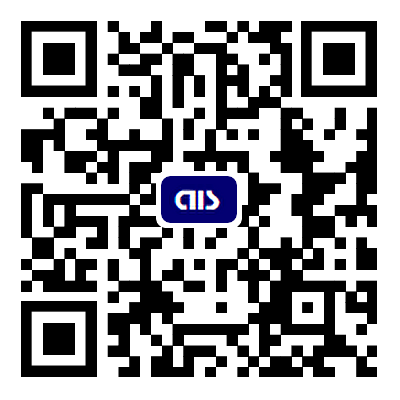REFERENCES
1. Carter MJ, DaVanzo J, Haught R, Nusgart M, Cartwright D, Fife CE. Chronic wound prevalence and the associated cost of treatment in Medicare beneficiaries: changes between 2014 and 2019. J Med Econ. 2023;26:894-901.
2. Nussbaum SR, Carter MJ, Fife CE, et al. An economic evaluation of the impact, cost, and medicare policy implications of chronic nonhealing wounds. Value Health. 2018;21:27-32.
3. Khalid N, Qayyum A, Bilal M, Al-Fuqaha A, Qadir J. Privacy-preserving artificial intelligence in healthcare: techniques and applications. Comput Biol Med. 2023;158:106848.
4. Sharma M, Savage C, Nair M, Larsson I, Svedberg P, Nygren JM. Artificial intelligence applications in health care practice: scoping review. J Med Internet Res. 2022;24:e40238.
5. Guni A, Varma P, Zhang J, Fehervari M, Ashrafian H. Artificial intelligence in surgery: the future is now. Eur Surg Res. 2024;65:22-39.
6. Athanasopoulou K, Daneva GN, Adamopoulos PG, Scorilas A. Artificial intelligence: the milestone in modern biomedical research. BioMedInformatics. 2022;2:727-44.
7. Morris MX, Fiocco D, Caneva T, Yiapanis P, Orgill DP. Current and future applications of artificial intelligence in surgery: implications for clinical practice and research. Front Surg. 2024;11:1393898.
8. Patel NP, Granick MS. Wound education: American medical students are inadequately trained in wound care. Ann Plast Surg. 2007;59:53-5; discussion 55.
9. Sürme Y, Kartın PT, Çürük GN. Knowledge and practices of nurses regarding wound healing. J Perianesth Nurs. 2018;33:471-8.
10. Weenig RH, Davis MDP, Dahl PR, Su WPD. Skin ulcers misdiagnosed as pyoderma gangrenosum. N Engl J Med. 2002;347:1412-8.
11. Birkner M, Schalk J, von den Driesch P, Schultz ES. Computer-assisted differential diagnosis of pyoderma gangrenosum and venous ulcers with deep neural networks. J Clin Med. 2022;11:7103.
12. Hüsers J, Moelleken M, Richter ML, et al. An image based object recognition system for wound detection and classification of diabetic foot and venous leg ulcers. Stud Health Technol Inform. 2022;294:63-7.
13. Swerdlow M, Guler O, Yaakov R, Armstrong DG. Simultaneous segmentation and classification of pressure injury image data using Mask-R-CNN. Comput Math Methods Med. 2023;2023:3858997.
14. Zahia S, Sierra-Sosa D, Garcia-Zapirain B, Elmaghraby A. Tissue classification and segmentation of pressure injuries using convolutional neural networks. Comput Methods Programs Biomed. 2018;159:51-8.
15. Chang CW, Christian M, Chang DH et al. Deep learning approach based on superpixel segmentation assisted labeling for automatic pressure ulcer diagnosis. PLoS One. 2022;17:e0264139.
16. Eldem H, Ülker E, Işıklı OY. Alexnet architecture variations with transfer learning for classification of wound images. Eng Sci Technol Int J. 2023;45:101490.
17. Mohammed HT, Bartlett RL, Babb D, Fraser RDJ, Mannion D. A time motion study of manual versus artificial intelligence methods for wound assessment. PLoS One. 2022;17:e0271742.
18. Lau CH, Yu KH, Yip TF, et al. An artificial intelligence-enabled smartphone app for real-time pressure injury assessment. Front Med Technol. 2022;4:905074.
19. Chan KS, Chan YM, Tan AHM, et al. Clinical validation of an artificial intelligence-enabled wound imaging mobile application in diabetic foot ulcers. Int Wound J. 2022;19:114-24.
20. Aldoulah ZA, Malik H, Molyet R. A novel fused multi-class deep learning approach for chronic wounds classification. Appl Sci. 2023;13:11630.
21. Veredas F, Mesa H, Morente L. Binary tissue classification on wound images with neural networks and bayesian classifiers. IEEE Trans Med Imaging. 2010;29:410-27.
22. Lien AS, Lai C, Wei J, Yang H, Yeh J, Tai H. A granulation tissue detection model to track chronic wound healing in DM foot ulcers. Electronics. 2022;11:2617.
23. Liu Z, John J, Agu E. Diabetic foot ulcer ischemia and infection classification using efficientnet deep learning models. IEEE Open J Eng Med Biol. 2022;3:189-201.
24. Viswanathan V, Govindan S, Selvaraj B, Rupert S, Kumar R. A clinical study to evaluate autofluorescence imaging of diabetic foot ulcers using a novel artificial intelligence enabled noninvasive device. Int J Low Extrem Wounds. 2024;23:169-76.
25. Chairat S, Chaichulee S, Dissaneewate T, Wangkulangkul P, Kongpanichakul L. AI-assisted assessment of wound tissue with automatic color and measurement calibration on images taken with a smartphone. Healthcare. 2023;11:273.
26. Kavitha I, Suganthi SS, Ramakrishnan S. Analysis of chronic wound images using factorization based segmentation and machine learning methods. In: Proceedings of the 2017 International Conference on Computational Biology and Bioinformatics (ICCBB '17); New York, USA. pp. 74-8.
27. Kaile K, Leiva K, Mahadevan J, et al. Low-cost smartphone based imaging device to detect subsurface tissue oxygenation of wounds. In: Optics and Biophotonics in Low-Resource Settings V; San Francisco, USA. 2019. pp. 62-5.
28. Zoppo G, Marrone F, Pittarello M, et al. AI technology for remote clinical assessment and monitoring. J Wound Care. 2020;29:692-706.
29. Guadagnin R, Neves RDS, Santana LA, Guilhem DB. An image mining based approach to detect pressure ulcer stage. Pattern Recognit Image Anal. 2014;24:292-6.
30. Mondragon N, Zito PM. Pressure injury. In: StatPearls [Internet]. Available from: https://www.ncbi.nlm.nih.gov/books/NBK557868/. [Last accessed on 2 Nov 2024].
31. Al Aboud AM, Manna B. Wound pressure injury management. In: StatPearls [Internet]. Available from: https://www.ncbi.nlm.nih.gov/books/NBK532897/. [Last accessed on 2 Nov 2024].
32. Gabison S, Pupic N, Evans G, Dolatabadi E, Dutta T. Measuring repositioning in home care for pressure injury prevention and management. Sensors. 2022;22:7013.
33. Danilovich I, Moshkin V, Reimche A, Tevelevich M, Mikhaylovskiy N. Video monitoring over anti-decubitus protocol execution with a deep neural network to prevent pressure ulcer. Annu Int Conf IEEE Eng Med Biol Soc. 2021;2021:1384-7.
34. Ni TF, Wang JL, Chen CK, Shih F, Wang J. Can a prolonged healing pressure injury be benefited by using an AI mattress? A case study. BMC Geriatr. 2024;24:307.
35. Kalasin S, Sangnuang P, Surareungchai W. Intelligent wearable sensors interconnected with advanced wound dressing bandages for contactless chronic skin monitoring: artificial intelligence for predicting tissue regeneration. Anal Chem. 2022;94:6842-52.
36. Topaz M, Lai K, Dowding D, et al. Automated identification of wound information in clinical notes of patients with heart diseases: developing and validating a natural language processing application. Int J Nurs Stud. 2016;64:25-31.
37. Robnik-Sikonja M, Cukjati D, Kononenko I. Comprehensible evaluation of prognostic factors and prediction of wound healing. Artif Intell Med. 2003;29:25-38.
38. Ngo QC, Ogrin R, Kumar DK. Computerised prediction of healing for venous leg ulcers. Sci Rep. 2022;12:17962.
39. Chen CL, Chiang SC, Hung LP, Jhang SJ. Applying AIoT image recognition for prognosis of wound healing in long-term care residential facility. Wireless Netw 2023.
40. Alderden J, Pepper GA, Wilson A, et al. Predicting pressure injury in critical care patients: a machine-learning model. Am J Crit Care. 2018;27:461-8.
41. Cai JY, Zha ML, Song YP, Chen HL. Predicting the development of surgery-related pressure injury using a machine learning algorithm model. J Nurs Res. 2020;29:e135.
42. Lee SK, Shin JH, Ahn J, Lee JY, Jang DE. Identifying the risk factors associated with nursing home residents’ pressure ulcers using machine learning methods. Int J Environ Res Public Health. 2021;18:2954.
43. Lustig M, Schwartz D, Bryant R, Gefen A. A machine learning algorithm for early detection of heel deep tissue injuries based on a daily history of sub-epidermal moisture measurements. Int Wound J. 2022;19:1339-48.
44. Shi L, Wei H, Zhang T, et al. A potent weighted risk model for evaluating the occurrence and severity of diabetic foot ulcers. Diabetol Metab Syndr. 2021;13:92.
45. Nanda R, Nath A, Patel S, Mohapatra E. Machine learning algorithm to evaluate risk factors of diabetic foot ulcers and its severity. Med Biol Eng Comput. 2022;60:2349-57.
46. Schäfer Z, Mathisen A, Svendsen K, Engberg S, Thomsen TR, Kirketerp-Møller K. Toward machine-learning-based decision support in diabetes care: a risk stratification study on diabetic foot ulcer and amputation. Front Med. 2021;7:601602.
47. Schäfer Z, Mathisen A, Svendsen K, Engberg S, Rolighed Thomsen T, Kirketerp-Møller K. Toward machine-learning-based decision support in diabetes care: a risk stratification study on diabetic foot ulcer and amputation. Front Med. 2020;7:601602.
48. Xie P, Li Y, Deng B, et al. An explainable machine learning model for predicting in-hospital amputation rate of patients with diabetic foot ulcer. Int Wound J. 2022;19:910-8.
49. Morris MX, Song EY, Rajesh A, Asaad M, Phillips BT. Ethical, legal, and financial considerations of artificial intelligence in surgery. Am Surg. 2023;89:55-60.
50. World Health Organization. WHO outlines considerations for regulation of artificial intelligence for health. 2023. Available from: https://www.who.int/news/item/19-10-2023-who-outlines-considerations-for-regulation-of-artificial-intelligence-for-health. [Last accessed on 2 Nov 2024].
51. Nutifafa Cudjoe A. Ethical implications of artificial intelligence in the healthcare sector. Available from: https://www.researchgate.net/profile/Nutifafa-Amedior/publication/371806117_Ethical_Implications_of_Artificial_Intelligence_in_the_Healthcare_Sector/links/66659941b769e769192559d4/Ethical-Implications-of-Artificial-Intelligence-in-the-Healthcare-Sector.pdf. [Last accessed on 2 Nov 2024].
52. Sadiq A, Khumalo NP, Bayat A. Chapter 8 Genetics of keloid scarring. In: Textbook on Scar Management: State of the Art Management and Emerging Technologies [Internet]. Cham: Springer International Publishing; 2020. pp. 61-76. Available from: https://www.ncbi.nlm.nih.gov/books/NBK586075/. [Last accessed on 2 Nov 2024].
53. Schmieder SJ, Ferrer-Bruker SJ. Hypertrophic scarring. In: StatPearls [Internet]. Available from: https://www.ncbi.nlm.nih.gov/books/NBK470176/. [Last accessed on 2 Nov 2024].
54. Kim J, Oh I, Lee YN, et al. Predicting the severity of postoperative scars using artificial intelligence based on images and clinical data. Sci Rep. 2023;13:13448.
55. Chang CP, Lin CJ, Fann WC, Hsieh CH. Identifying necrotizing soft tissue infection using infectious fluid analysis and clinical parameters based on machine learning algorithms. Heliyon. 2024;10:e29578.
56. Haas R, McGill SC. Artificial intelligence for the prediction of sepsis in adults. In: CADTH Horizon Scan. Available from: https://www.ncbi.nlm.nih.gov/books/NBK596676/. [Last accessed on 2 Nov 2024].
57. Henry KE, Adams R, Parent C, et al. Factors driving provider adoption of the TREWS machine learning-based early warning system and its effects on sepsis treatment timing. Nat Med. 2022;28:1447-54.









